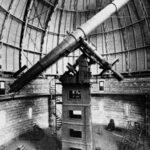Most of Sheboygan’s Jews emigrated from the “Pale of Settlement,” an area of legal Jewish settlement along Russia’s western border established in 1791. Periodic violent pogroms and more stringent restrictions on Jewish lives and livelihoods imposed in 1882 touched off a wave of Jewish emigration from the Pale. Between 1881 and 1914 two million Jews left Russia for America.
The first Russian Jews arrived in Sheboygan in the 1880s. Like many other immigrants, they often followed their “landsleit” (fellow townsmen) to settlements in the new world, which resulted in many of Sheboygan’s Jewish immigrants coming from a relatively small area east of Vilna and north of Minsk in current-day Belarus. They settled on the northwest side of Sheboygan, in a neighborhood bounded by 13th and 15th Streets, Geele Avenue on the north, and Bluff Avenue on the south.
By the early twentieth century, Sheboygan’s thriving Jewish community rivaled the size of Milwaukee’s and supported three Orthodox synagogues, all within a few blocks of each other. Congregations initially met in members’ homes, but they acquired permanent buildings for prayer as soon as they could afford to. Sheboygan’s first synagogue, Ahavas Sholem, was established in 1903 in what had been the first Catholic Church built in Sheboygan, St. Mary Magdalene.


Sheboygan’s second synagogue, known as “The White Shul,” opened on the southwest corner of North 13th Street and Carl Avenue in 1910. Charles Schoenkin, one of the early Jewish immigrants to the city, settled his family a few houses down from The White Shul. Although Schoenkin worked as a peddler and scrap dealer, his son, Nathan Schoenkin, found work as a clerk at the Lakeland Manufacturing Co., a clothing factory run by the Holman family, who were pillars of the Sheboygan Jewish community. Lakeland Manufacturing and other Holman family businesses often served as entry jobs for new Jewish arrivals to Sheboygan.
After serving in the United States military during World War II, Nathan Schoenkin joined his brothers, Gustave and Leo, in forming the Schoenkin Brothers Iron and Metal Co., a family scrap metal business that provided the economic stability to launch the next generation of children.
Read more about Jews in Sheboygan by checking out Rachel Pope’s article in Archive, the University of Wisconsin-Madison Undergraduate Journal of History.
This story was edited and adapted from David Driscoll’s original Curators’ Favorites article.
SOURCES
Adas Israel Congregation, Minutes and Financial Records, ca. 1900-1931, WHS Library Microfilm 342 (P83-1345).
Congregation Beth El, Sheboygan,”25th anniversary, Congregation Beth El, 1944-1969″ Commemorative booklet. Sheboygan, WI: The Congregation, 1969.
“Former Synagogue Will Have Star of David Preserved,” The Sheboygan Press, 9 June 2006.
“JewishGen”, a Jewish genealogical web site, hosts a very informative collection of stories, recollections and photographs of Sheboygan’s Jewish community at www.shtetlinks.jewishgen.org/Sheboygan/.
A guide to the history and culture of Jewish Belarus, at www.belarusguide.com/culture1/.






